Revolutionizing Care with Modern Digital Health Tools
- VTS Healthcare

- Nov 15
- 4 min read
Healthcare is evolving rapidly, and modern digital health tools are at the forefront of this transformation. These tools are reshaping how hospitals, clinics, and healthcare providers operate, making care more efficient, accessible, and patient-centered. As someone deeply involved in this field, I have witnessed firsthand how technology can improve outcomes and streamline workflows. In this post, I will explore the key ways digital health is revolutionizing care and offer practical insights on leveraging these innovations effectively.
The Impact of Modern Digital Health Tools on Healthcare Delivery
Modern digital health tools have changed the landscape of healthcare delivery. They enable providers to collect, analyze, and share patient data in real time, leading to faster, more accurate diagnoses. For example, electronic health records (EHRs) allow clinicians to access a patient’s medical history instantly, reducing errors and test duplication.
Telemedicine platforms have also become essential, especially in reaching patients in remote or underserved areas. These tools allow virtual consultations, reducing the need for travel and minimizing exposure to contagious diseases. Additionally, wearable devices continuously monitor vital signs, alerting providers to potential health issues before they become critical.
Hospitals and clinics that adopt these tools can expect:
Improved patient engagement and satisfaction
Enhanced coordination among care teams
Reduced administrative burdens
Lower operational costs
Key Features of Modern Digital Health Tools
Understanding the core features of modern digital health tools helps healthcare providers choose the right solutions for their needs. Here are some of the most impactful features:
Interoperability - The ability to exchange data seamlessly between different systems and devices is crucial. It ensures that all members of a care team have access to the same up-to-date information.
Real-time Data Access - Instant access to patient data supports timely decision-making and personalized care plans.
Automation - Automating routine tasks such as appointment scheduling, billing, and prescription refills frees up staff to focus on patient care.
Analytics and Reporting - Advanced analytics help identify trends, predict patient risks, and measure outcomes, enabling continuous improvement.
Security and Compliance - Protecting patient data is non-negotiable. Modern tools must comply with regulations such as HIPAA and use robust encryption.
By focusing on these features, healthcare providers can select tools that not only improve care but also align with their operational goals.
How to Integrate Digital Health Tools into Existing Systems
Integrating new digital health tools into existing healthcare infrastructure can be challenging but rewarding. Here are some practical steps to ensure a smooth transition:
Assess Current Systems: Understand your current workflows and technology stack. Identify gaps and areas where digital tools can add value.
Choose Scalable Solutions: Select tools that can grow with your organization and adapt to changing needs.
Train Staff Thoroughly: Provide comprehensive training to ensure all users are comfortable and proficient with the new technology.
Pilot Programs: Start with small-scale pilots to test functionality and gather feedback before full deployment.
Monitor and Optimize: Continuously track performance metrics and user feedback to refine processes and maximize benefits.
Successful integration requires collaboration between IT teams, clinical staff, and leadership. Clear communication and ongoing support are key to overcoming resistance and ensuring adoption.

The Role of Digital Health Solutions in Enhancing Pharmacy Services
One area where digital health tools have made a significant impact is pharmacy services. Efficient medication management is critical for patient safety and treatment effectiveness. Digital health solutions offer features such as electronic prescribing, inventory management, and automated dispensing.
Electronic prescribing reduces illegible handwriting errors and streamlines the prescription process. Inventory management systems help pharmacies maintain optimal stock levels, reducing waste and ensuring availability. Automated dispensing machines improve accuracy and speed, freeing pharmacists to focus on patient counseling.
Integrating these solutions with hospital and clinic systems creates a seamless workflow from prescription to delivery. This integration enhances communication between prescribers and pharmacists, reduces delays, and improves medication adherence.
Future Trends in Digital Health Tools
The future of healthcare will be shaped by continuous innovation in digital health tools. Some trends to watch include:
Artificial Intelligence (AI) and Machine Learning: These technologies will enhance diagnostics, personalize treatment plans, and predict patient outcomes with greater accuracy.
Remote Patient Monitoring: Advances in sensors and connectivity will enable more comprehensive monitoring outside clinical settings.
Blockchain for Data Security: Blockchain technology promises to improve data integrity and patient privacy.
Virtual Reality (VR) and Augmented Reality (AR): These tools will support medical training, patient education, and even pain management.
Patient-Centered Apps: Mobile applications will empower patients to manage their health proactively and communicate more effectively with providers.
Staying informed about these trends will help healthcare organizations remain competitive and deliver the best possible care.
Embracing Digital Health Tools for Better Patient Outcomes
Adopting modern digital health tools is no longer optional; it is essential for delivering high-quality care in today’s healthcare environment. These tools improve efficiency, reduce costs, and most importantly, enhance patient outcomes. By carefully selecting, integrating, and optimizing digital health technologies, healthcare providers can create a more connected, responsive, and patient-focused system.
I encourage healthcare organizations to explore the full potential of these innovations and invest in solutions that align with their mission and goals. The future of healthcare is digital, and embracing these tools will ensure that care is not only revolutionized but also sustainable and accessible for all.
Thank you for reading. If you want to learn more about how digital health tools can transform your pharmacy services, check out this digital health solutions platform.





Comments